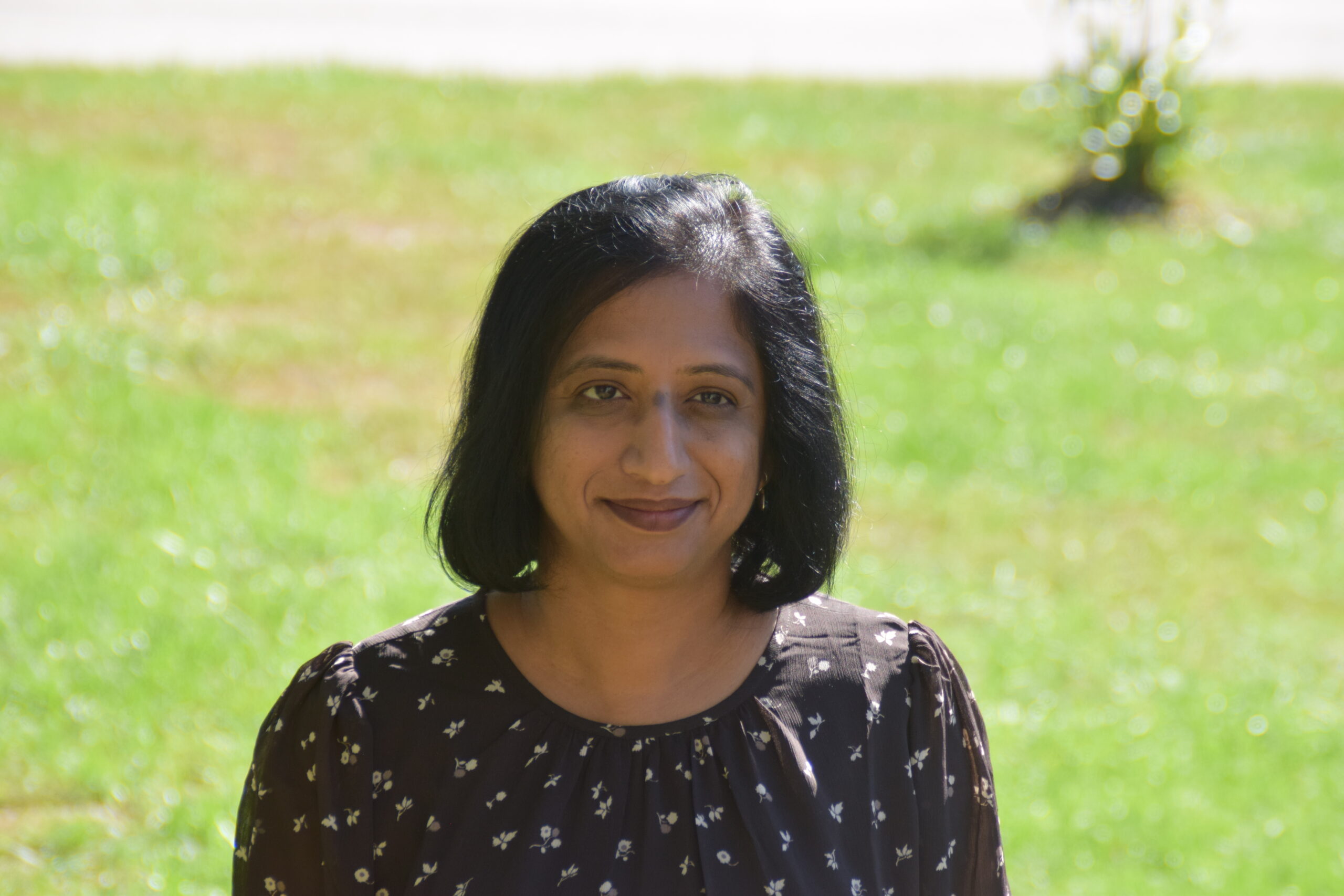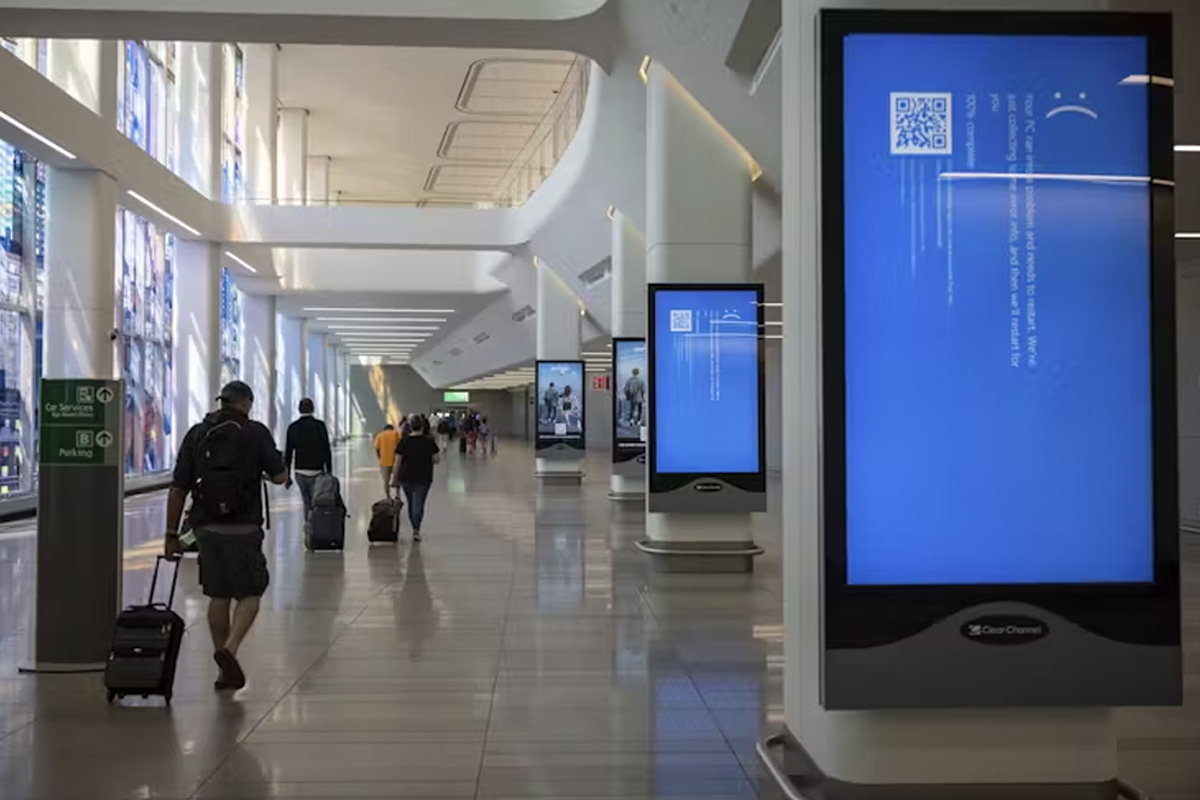She didn’t exactly experience a Sir Isaac Newton-like epiphany after being conked by a falling apple, but Priya Narayanan, Ph.D. ’08, mechanical engineering, spent a lot of her time at UMBC interacting with the iconic red fruit.
For her Ph.D. thesis, Narayanan worked with the U.S. Department of Agriculture to study whether a simple device made of a long, inclined track could reliably orient apples. The ultimate goal was to automate visual inspection of the fruit—using cameras to spot blemishes—and the cameras required the same view of the apple each time.
Narayanan spent thousands of hours performing experiments with rolling fruit, filming high-speed videos of its descent down the track, and developing mathematical models of the apple’s motion to explore why the fruit ended up in its final orientation at the bottom of the track.
“I was able to shape the direction of the research and got interested in modeling the contact mechanics of the apples,” Narayanan says. “I thought it might be easy, but it turned out to be very hard.”
Rouben Rostamian, a professor in the Department of Mathematics and Statistics at UMBC who worked with Narayanan on the modeling, commended her persistence.
“Priya was interested in studying the problem deeply,” he says. “She learned new areas of math so that she could really pursue her questions.”
Developing her skill set
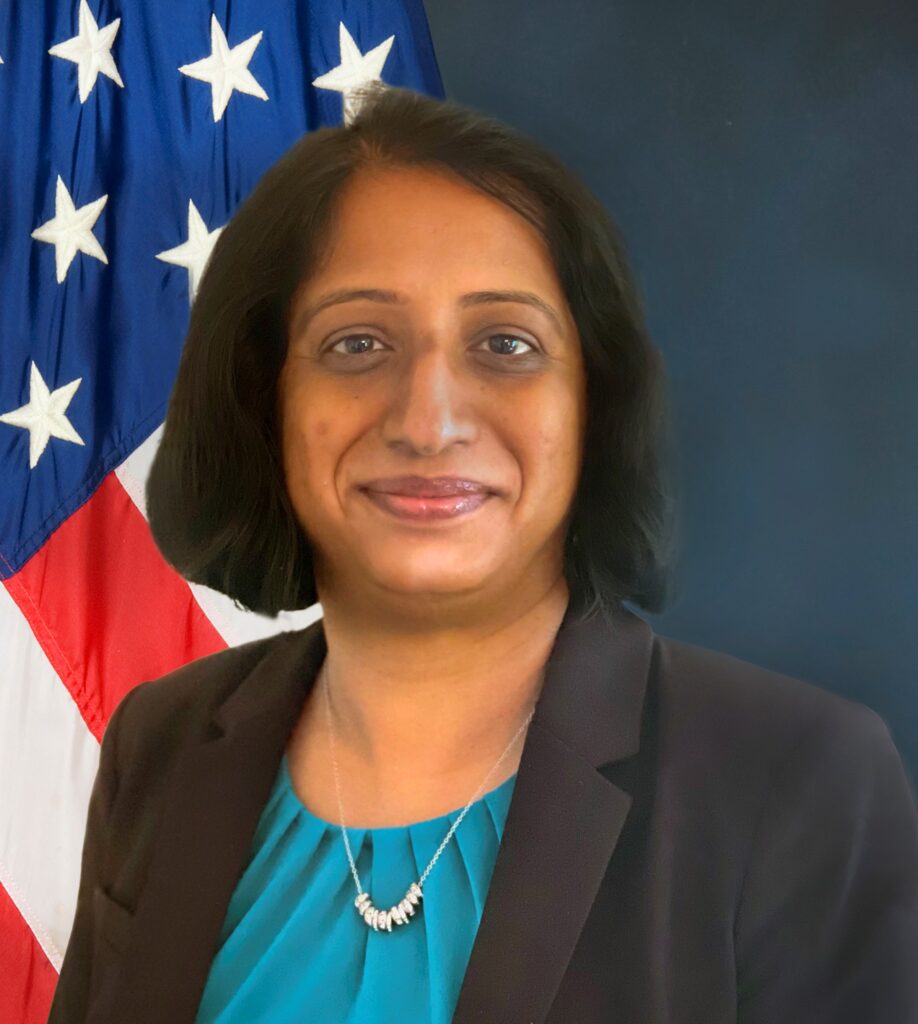
Curiosity and commitment to learning have been a constant of Narayanan’s approach to problem solving—even as the systems she studies and the roles she takes on have shifted over her career. Narayanan was recently named chief of the autonomous systems branch at the U.S. Army DEVCOM Army Research Laboratory (ARL). She leads teams working to develop intelligent robots to assist the U.S. military.
“I’m not studying my apples anymore,” she says. “But in graduate school, I broadened my skill set. That has really helped me throughout my career.”
After graduating from UMBC, Narayanan worked for a few years at the University of Maryland School of Medicine in Baltimore. She studied robotic systems that could assist patients recovering from strokes. The work gave her the opportunity to develop expertise in computer vision and image processing as well as gain experience making prototypes for robotic research and conducting clinical trials.
In 2014, Narayanan was awarded a National Research Council fellowship to work at the Naval Research Laboratory.
“It was around this time that deep learning started making waves,” she says. She shifted her focus to building artificial intelligence (AI) models. When her fellowship ended after three years, Narayanan joined the ARL, headquartered in Adelphi, Maryland, and has been there ever since.
She has ascended the ranks at the organization, moving from a research engineering position, to leader of a small team, to ultimately head of an entire branch.
Overlapping work with UMBC
Researchers under Narayanan’s leadership conduct research in robotics to help aerial, wheeled, and legged robots autonomously navigate rugged landscapes and difficult terrains, and coordinate their actions with other robots and humans.
As part of her role, Narayanan has worked with UMBC researchers affiliated with the Center for Real-time Distributed Sensing and Autonomy. The center, which is led by information systems professors Aryya Gangopadhyay and Nirmalya Roy, coordinates with ARL on research to develop AI-enabled smart robots.
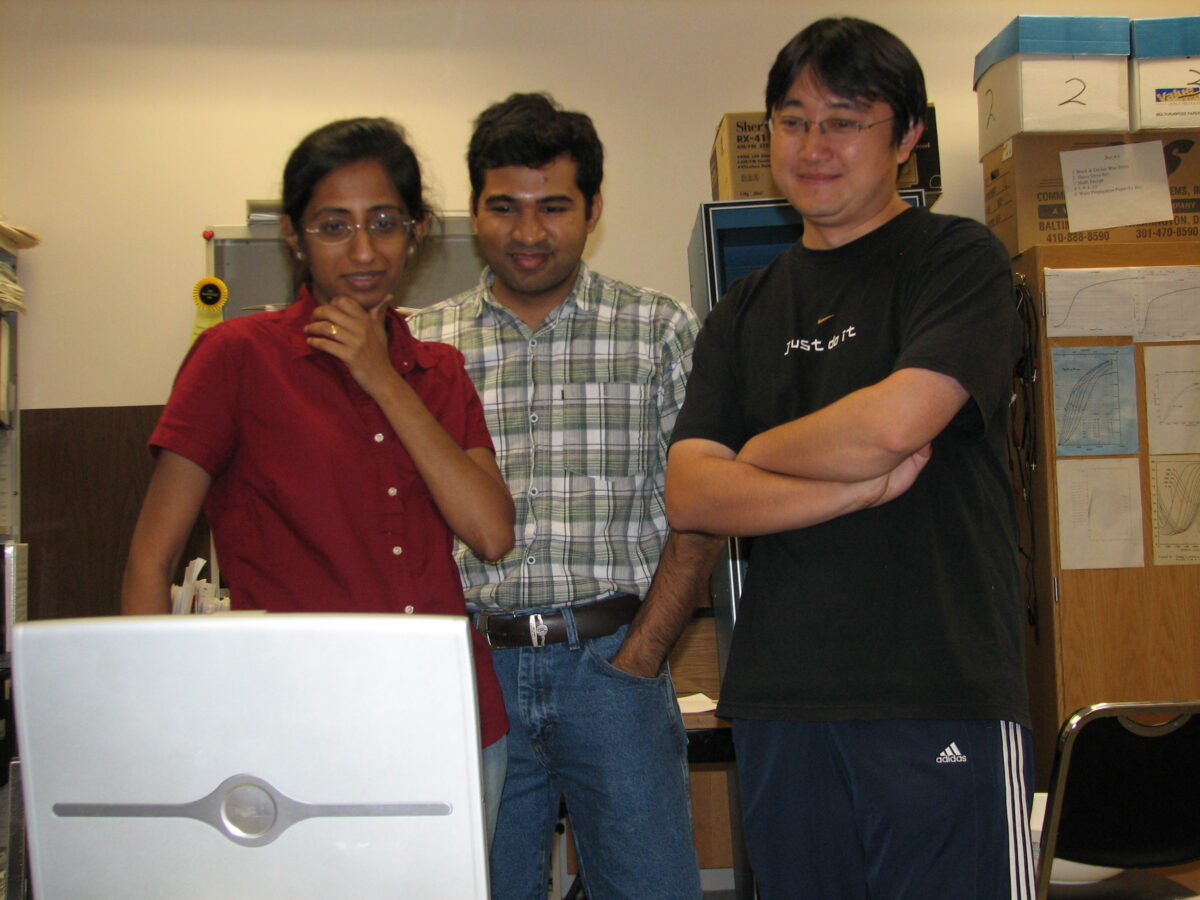
Narayanan says she found her way into management by embracing leadership opportunities that came her way, such as leading an ARL seedling program that encouraged researchers to form teams and submit proposals for new high-risk, high-payoff projects. “I’ve also attended an entrepreneurship and leadership program organized by ARL in collaboration with UMBC Training Centers, so I’m still learning from the university,” she says.
She honed soft skills, such as communication and networking, that have been critical to her success. She also says her broad range of research experience has been useful in her leadership positions, helping her connect with team members who have varying areas of expertise.
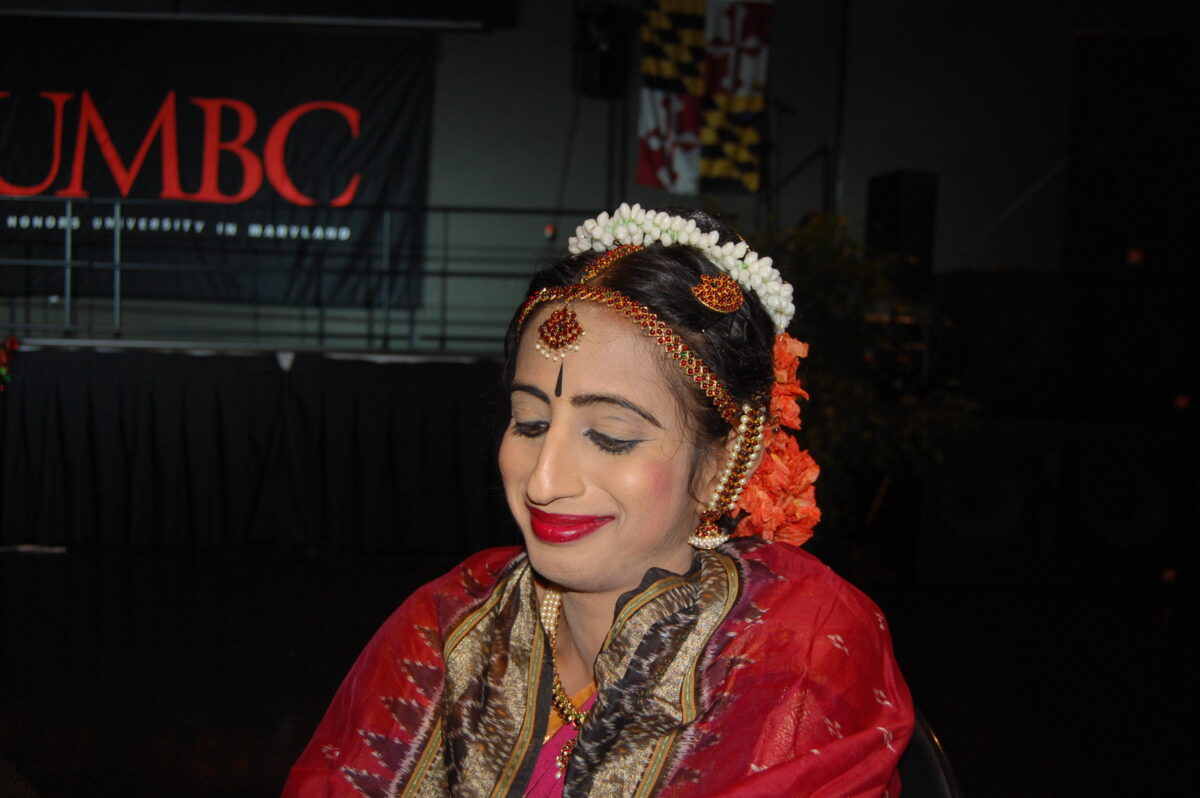
Looking back at her days at UMBC, Narayanan remembers a wonderful community and the feeling of being supported. Not long after she arrived on campus, she and a few fellow students found themselves in the same elevator as then President Freeman Hrabowski. He introduced himself and asked all the students their names and what they were studying. Later, when Narayanan and a friend performed a classical dance on campus in celebration of the Indian holiday Diwali, she remembers how President Hrabowski came backstage to complement their performance.
She encourages current students to take advantage of all that the university and the region have to offer: “Realize how many resources you have at your disposal, and really make use of them,” she says.
Uri Tasch, her Ph.D. advisor, who is now an emeritus professor of mechanical engineering, recalls how Narayanan showed up nearly every day at the lab. “You couldn’t stop her,” he said. “She did beautiful work, and she always had a smile on her face.”

